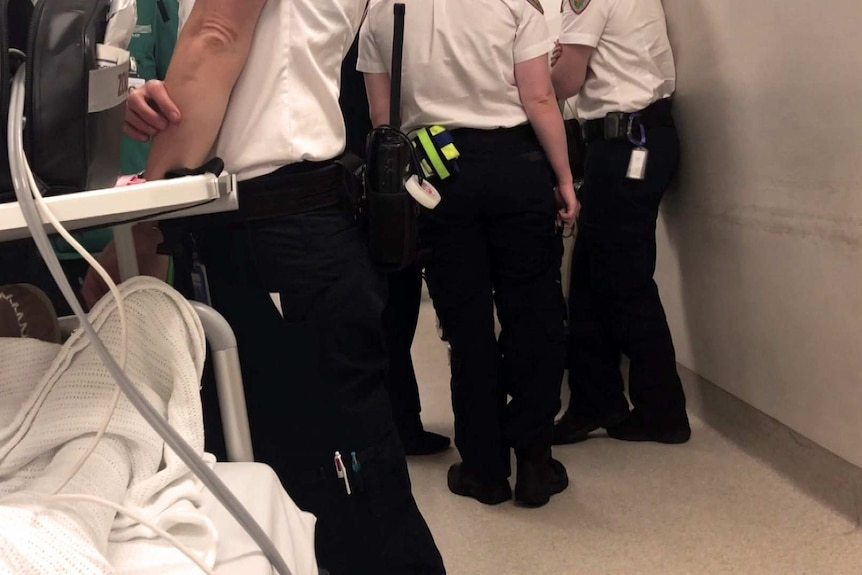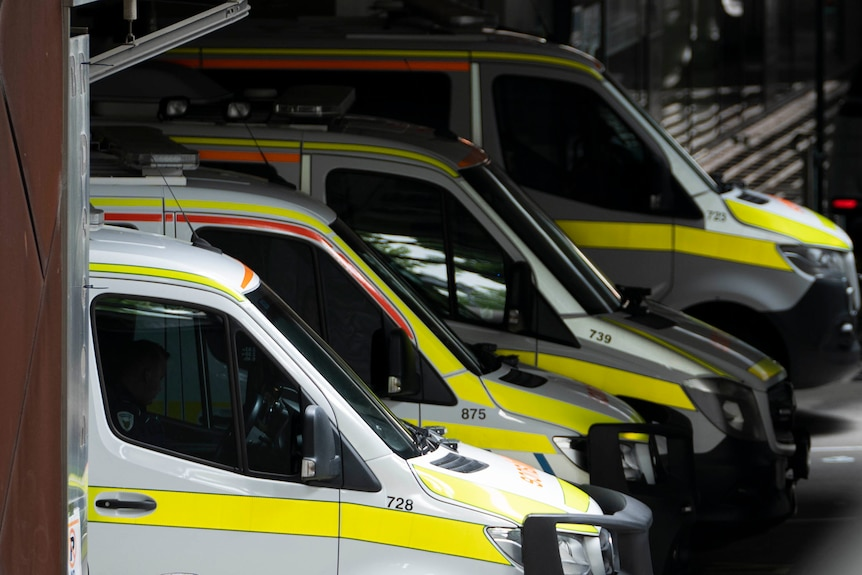Tasmanian ramping inquiry hears from Royal Hobart Hospital emergency department director
· In short: The acting director of the Royal Hobart Hospital's emergency department says a lack of available inpatient beds is creating a dangerous situation.
· Dr Paul Scott has given evidence to a parliamentary committee inquiring into ambulance ramping in Tasmania.
· What's next? The committee is holding further public hearings before reporting back to the Tasmanian Parliament.
The acting director of the Royal Hobart Hospital's (RHH) emergency department has described a dire situation for patients and staff — with the waiting area so full that a curtain is all that separates infectious patients.
Paul Scott gave evidence on Tuesday to a Tasmanian parliamentary inquiry into ambulance ramping.
Dr Scott said a lack of available inpatient beds was creating a dangerous situation in the RHH emergency department every day.
He said patients with pneumonia were being kept in the ED, patients with dementia or acute mental health conditions remained with general patients, and elderly patients in delirious conditions were being "ramped" for up to 14 hours, while paramedics waited to transfer them into the care of the hospital.

The committee heard some elderly patients had been "ramped" for up to 14 hours while paramedics waited to transfer them into the care of the hospital.(Supplied)
Dr Scott was also concerned about the inability to properly accommodate patients with infectious diseases.
"These patients stay in a common area in ED, often protected simply by a curtain, or perhaps sitting in the waiting room for a long period of time," he said.
Dr Scott also said staff came to work fearing legal consequences due to the level of care, and it was leading to staff quitting.
"There's a large level of dissatisfaction and fear of medico legal consequence and significant risk," he said.
"That means that we have significant staff attrition … people who feel that the risk in emergency department is so great that it's not an environment that they wish to subject themselves to medico legal risk."

The head of the Royal Hobart Hospital's emergency department says his team is unable to deliver the standard of care required.( ABC News: Loretta Lohberger )
The RHH emergency department has 27 acute bed spaces, but they are full almost every morning, Dr Scott said.
It means additional admissions, often patients with acute medical conditions, need to wait.
"My staff [are] unable to deliver the standard of care that they know that patients require," he said.
"I have more than a ward of admitted inpatients in my emergency department 24-7 every day, plus dealing with 220 new arrivals."
Dr Scott said one measure that could ease pressure on the ED would be for patients to be kept in corridors — or in other non-clinical spaces — on hospital wards while they wait for a bed to be freed up.
Dr Scott described how the Launceston General Hospital had used cupboard space to create more room for patients.
"Launceston, for example, has patients in corridors for greater than 24 hours," he said.
"They've accessed an old cupboard, removed the shelves, and have patients in [the] cupboard.
"They've used airlock areas, we use essentially non-clinical areas … the bulk of our ramp patients and sicker patients we keep in the corridor next to our resuscitation area."
WATCH
Duration: 1 minute 38 seconds1m 38s

Explained: How do hospitals get bed blocked?
Patients forced to stay in ED because of a lack of suitable ward beds
The lack of space on hospital wards has been cited as one of the reasons for delays in the ED, and for causing bed block.
Dr Scott told the committee that in some cases, patients were too sick to be admitted to general wards because they needed specialist care, but they were not sick enough for intensive care.
"Their destination is ideally a higher acuity bed space where the staff have extra training and extra support and extra monitoring," Dr Scott said.
"There are very few of those available, very limited training amongst the hospital population more generally to manage these people across the ward.
"It means these patients stay in ED, and that's not just adults, that's paediatric patients as well."

A parliamentary committee is inquiring into ambulance ramping in Tasmania.(ABC News: Maren Preuss)
He said some patients were staying in hospital for extended periods while they waited for a place in residential aged care or disability care.
Dr Scott said there were also challenges associated with moving homeless patients out of the hospital and back into homelessness.
Health Minister Guy Barnett said the government was working to improve conditions in emergency departments.
"The state does have a very serious issue with respect to the emergency department and the transfer of care delays," Mr Barnett said.
"We've already got plans in place, and action is already underway to ensure that improvements take place.
"Four out of 10 Tasmanians who present to ED are not emergency, this is because the lack of GPs and sustainable GP practices, which is a responsibility of the federal government."
Space to play or pause, M to mute, left and right arrows to seek, up and down arrows for volume.
GP training org calls for Tas government to pay HECS debts for new doctors
A seven-day-a-week model will be put to the RHH executive this week, for standard work practices for every day of the week, which could start next month.
Dr Scott told the committee that would be a positive move.
"They are actually recruiting for some additional resourcing," he said.
"It's more of a whole-of-system approach, which is refreshing to see."








